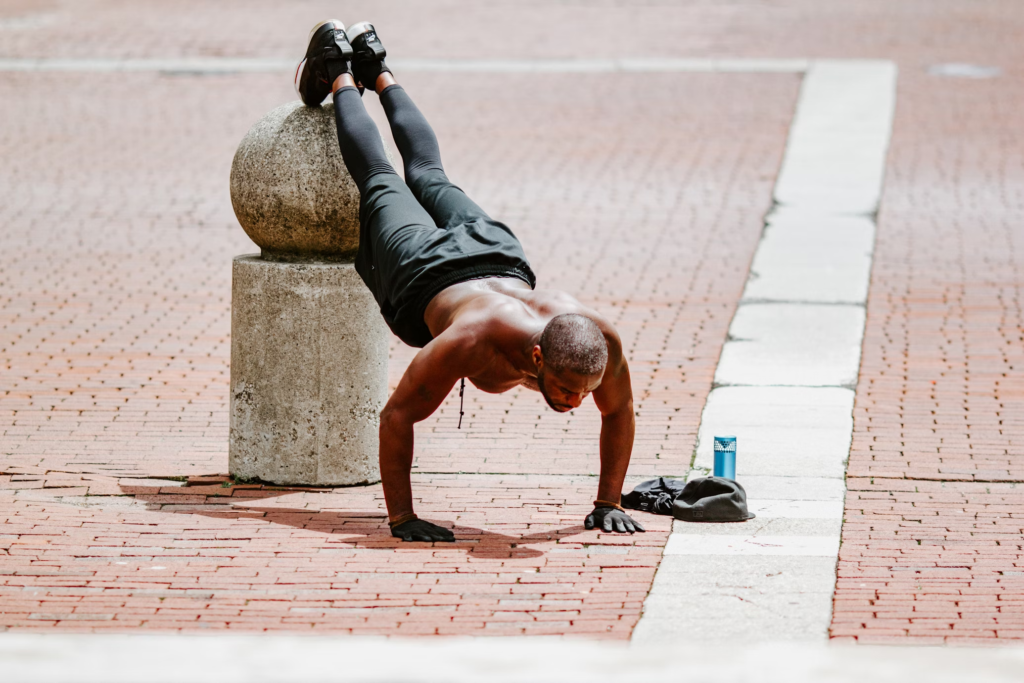Push-ups are one of the most effective exercises to build upper body strength, improve endurance, and enhance overall fitness. A simple bodyweight exercise that targets multiple muscle groups simultaneously, push-ups are an essential component of many training routines. However, while this exercise may seem straightforward, performing a push-up with proper technique is critical to maximize its benefits and prevent injury. In this article, we’ll cover how to do good push-ups by focusing on proper form, common mistakes to avoid, and ways to progress over time.
Understanding the Muscles Involved
Before diving into technique, it’s important to understand what muscles push-ups target. When done correctly, push-ups engage several key muscle groups:
- Chest (Pectorals) – Push-ups primarily work the pectoral muscles, which are the large muscles in the chest.
- Shoulders (Deltoids) – The shoulders play an important stabilizing role during the exercise.
- Triceps – The muscles on the back of the arms are heavily engaged as you push yourself up from the ground.
- Core (Abdominals and Obliques) – A stable core is essential to keep your body in a straight line, preventing sagging in the lower back.
- Lower Body – While push-ups are considered an upper-body workout, your legs, especially your quads and glutes, help maintain body alignment.
Step-by-Step Guide to Doing Good Push-Ups
- Position Your Hands and Feet Start by placing your hands on the floor, slightly wider than shoulder-width apart. Your fingers should be spread wide for stability, and your palms should be flat on the ground. Ensure your elbows point back at about a 45-degree angle from your body (not flaring out to the sides). Your feet should be hip-width apart, and your toes should be gripping the ground for added balance.
- Engage Your Core Before you begin lowering your body, activate your core. This means pulling your belly button toward your spine and tightening your abdominals. Engage your glutes to avoid letting your lower back dip, which can lead to strain. A strong core will help you maintain a straight line from your head to your heels throughout the movement.
- Lower Your Body Slowly lower your body by bending your elbows. Keep your chest and head aligned with your spine—don’t let your head drop or your chest arch up. Your chest should aim toward the ground in a controlled movement, making sure that your elbows are angled at about 45 degrees. Lower yourself until your chest is just a few inches above the floor, or as low as you can go without compromising form.
- Push Back Up Push through your palms to raise your body back up to the starting position. As you push up, keep your elbows from flaring out too much, maintaining that 45-degree angle. Make sure to fully extend your arms without locking your elbows at the top of the push-up.
- Repeat Perform the desired number of repetitions, focusing on maintaining form with every rep. Quality is more important than quantity, so if you can’t complete a set with good form, it’s better to stop and rest than to continue with improper technique.

Common Push-Up Mistakes to Avoid
- Sagging Hips or Lower Back A common mistake is letting your hips sag toward the ground during the push-up. This places excessive stress on the lower back, which could lead to injury. Make sure your body forms a straight line from head to heels.
- Flared Elbows Allowing your elbows to flare out to the sides creates unnecessary strain on the shoulders. Keep your elbows tucked at about a 45-degree angle to protect your shoulders and maximize the efficiency of the movement.
- Partial Range of Motion Not lowering yourself all the way to the ground or not fully extending your arms at the top limits the effectiveness of the push-up. Always aim for a full range of motion.
- Neck Strain It’s important to keep your head in line with your body. Avoid looking up or letting your head droop down. This will keep your neck safe and prevent strain.
Modifications and Progression
For beginners or those working up to full push-ups, there are several modifications to consider:
- Knee Push-Ups: If a full push-up is too challenging, try doing push-ups with your knees on the floor. This reduces the amount of weight your upper body needs to push, helping you build strength until you can progress to full push-ups.
- Incline Push-Ups: Perform push-ups with your hands elevated on a bench or a sturdy surface to reduce the difficulty level. This variation still works the same muscles but with less intensity.
- Negative Push-Ups: For those who can’t yet complete a full push-up, focusing on the lowering portion (eccentric phase) of the push-up can be a great way to build strength. Lower yourself slowly, then get back up using your knees or by standing and resetting.
To increase the difficulty of push-ups as you get stronger:
- Add Variations: Try clapping push-ups, diamond push-ups (with your hands close together to target the triceps), or decline push-ups (where your feet are elevated to work the upper chest and shoulders more).
- Increase Reps or Sets: Gradually add more repetitions or sets to your workout to continue challenging your muscles.

Conclusion
Mastering the push-up is a fantastic way to build strength, endurance, and stability across several muscle groups. By focusing on proper form, avoiding common mistakes, and gradually progressing, you’ll not only perform push-ups more effectively but also prevent injury and achieve better results. Whether you’re a beginner or an advanced athlete, incorporating push-ups into your routine can be a key step in improving your fitness level.
Check out this article for more core exercises and this article for more info on pushups!




